
25 trips to inspire self-reflection and adventure in 2025

Feb 15, 2025 • 20 min read

In 2025, set out on a journey of self-discovery – say, by joining the pilgrims of Lhasa, Tibet. Stanley Chen Xi/Getty Images
There's nothing quite like travel to uncover parts of yourself and the world you didn't know were there. So as 2025 kicks off, it's a good time to plan some mind-blowing adventures in the name of self-discovery.
As a warmup, we delved into Lonely Planet's Your Trip Starts Here, and picked 25 trip ideas suitable for everyone, but especially those who are game for a journey of introspection. Whatever trip you take, keep in mind two essential tips: slow down and leave your comfort zone. Then, you can expect some truly meaningful memories as you travel with purpose.

1. Trace the history of Warsaw’s Jewish community, Poland
Distance: 7km (4 miles)
Mode of transport: On foot
Difficulty: Easy
With glittering new office blocks, a meticulously recreated Old Town and the soaring Stalinist Palace of Culture and Science, when you walk through Warsaw today it's hard to imagine how broken the city was 80 years ago when Nazi Germany did its utmost to wipe Poland’s capital off the map.
In 1943, as if in a dress rehearsal, Hitler liquidated Warsaw’s Jewish Ghetto – about 2.5 sq km (1 sq mile) of the city, where the Nazis had crammed some 400,000 Jews. Disease, execution and starvation in the ghetto, and later in concentration camps, claimed the lives of the vast majority.
Tracing the historic landmarks, memorials and museums through the Muranów and Mirów neighborhoods of Warsaw provides insight into the city’s Jewish community, both past and present. It's also a great reminder that a kinder, better world is possible if we foster forgiveness and compassion.

2. Bangkok to Singapore by rail
Distance: 1900km (1181 miles)
Mode of transport: Train
Difficulty: Moderate
Discover what makes Southeast Asia tick on this epic train trip, a tale of three thrilling countries told over 1900km (1181 miles) of track. Southeast Asia’s most luxurious train, the Eastern & Oriental Express whisks passengers from Singapore to Bangkok in four lavish days, but you’ll need a Gordon Gekko–sized budget to board it. Fortunately, there is also a low-cost way to zip along the Malay Peninsula by rail, and it delivers a deep dive into the region’s rich cultural melting pot as part of the package.
Traveling on ordinary passenger trains between Bangkok and Singapore, mingle with people from every walk of life – monks heading to monasteries, students on college breaks, city families traveling for up-country reunions – while the train car zips by villages in a blur of temple spires and minarets. Liberated from the notion that luxury is the same as fulfillment, this crash course in the cultures and customs of Thailand, Malaysia and Singapore offers priceless memories, all for a ticket price of less than US$100.

3. Loop across Ladakh on two wheels
Distance: 894km (555 miles)
Mode of transport: Motorbike
Difficulty: Tough
Think you know mountains? Try tackling the road that corkscrews like a python through the high-altitude valleys of Ladakh. The motorbike trip from Himachal Pradesh to Ladakh and Kashmir is one of the world’s most thrilling road journeys: a life-affirming test of resolve and endurance with a side serving of jaw-dropping natural beauty. The rugged highway is a journey through the soul as well as the Himalayan landscape, best attempted on an Indian-built Enfield Bullet motorbike.
Like a mountaineering ascent, this journey of self-reliance will force you to look inside yourself as well as out at the scenery. Between Manali and Srinagar, 894km (555 miles) of road through wind-scoured wilds, sawtooth ridges and parched Himalayan valleys, with just the odd living thing to remind you that this isn’t, in fact, the surface of the moon. For many, the trip is transcendental, offering unseen and unlimited perspectives on nature and oneself. Expect an emotional journey to rival the seemingly endless miles you cover on the dusty tarmac.

4. Take an overland odyssey through Sub-Saharan Africa
Distance: 10,000km (6210 miles)
Mode of transport: Overland vehicle
Difficulty: Easy
Taking you deep into Africa's wilderness, this overland adventure promises one adrenaline rush after another, sandwiched between moments of contemplation. Encounters with nature are almost unreal: mesmerized by the immense African elephant casually crossing the dusty road in front of your safari truck, it may take you a moment to realize there’s also a black rhino quietly grazing in the grasslands beyond. Turn around and you see a family of giraffes feasting in a cluster of acacia trees nearby, their hilariously long blue tongues expertly navigating around the long thorns to reach succulent leaves.
It’s a moment you might experience in just about any one of the region’s national parks, in fact. This is a trip that allows you to make peace with the knowledge that life and the world around us will always contain mystery and some unknowns – and that's okay. It's a thought to unknot the shoulders. Only on an extended trip across East and Southern Africa can you begin to fully appreciate how wild and wonderful, fragile and complex this corner of the world really is.

5. Cycle New Zealand’s Tour Aotearoa
Distance: 3200km (1990 miles)
Mode of transport: Bicycle
Difficulty: Moderate
Ride from tip to tip of New Zealand on this two-wheeled quest through old-growth forests, past smoldering volcanoes and deserted beaches. In recent years, New Zealand’s government decided to invest in building cycle trails – a prescient move, given the importance of sustainable travel and how well-trodden some regions were becoming.
It inspired Jonathan Kennett, a celebrated New Zealand cyclist who began pioneering mountain-biking routes in the country in the 1980s, to attempt to piece together as many of the official new trails as possible in order to ride from the top of New Zealand to its southernmost tip at Bluff. By taking each day as it comes, this is a journey that allows you to stay present and in the moment. Tour Aotearoa is an excellent way to practice mindfulness and succumb to the serenity of being self-aware.
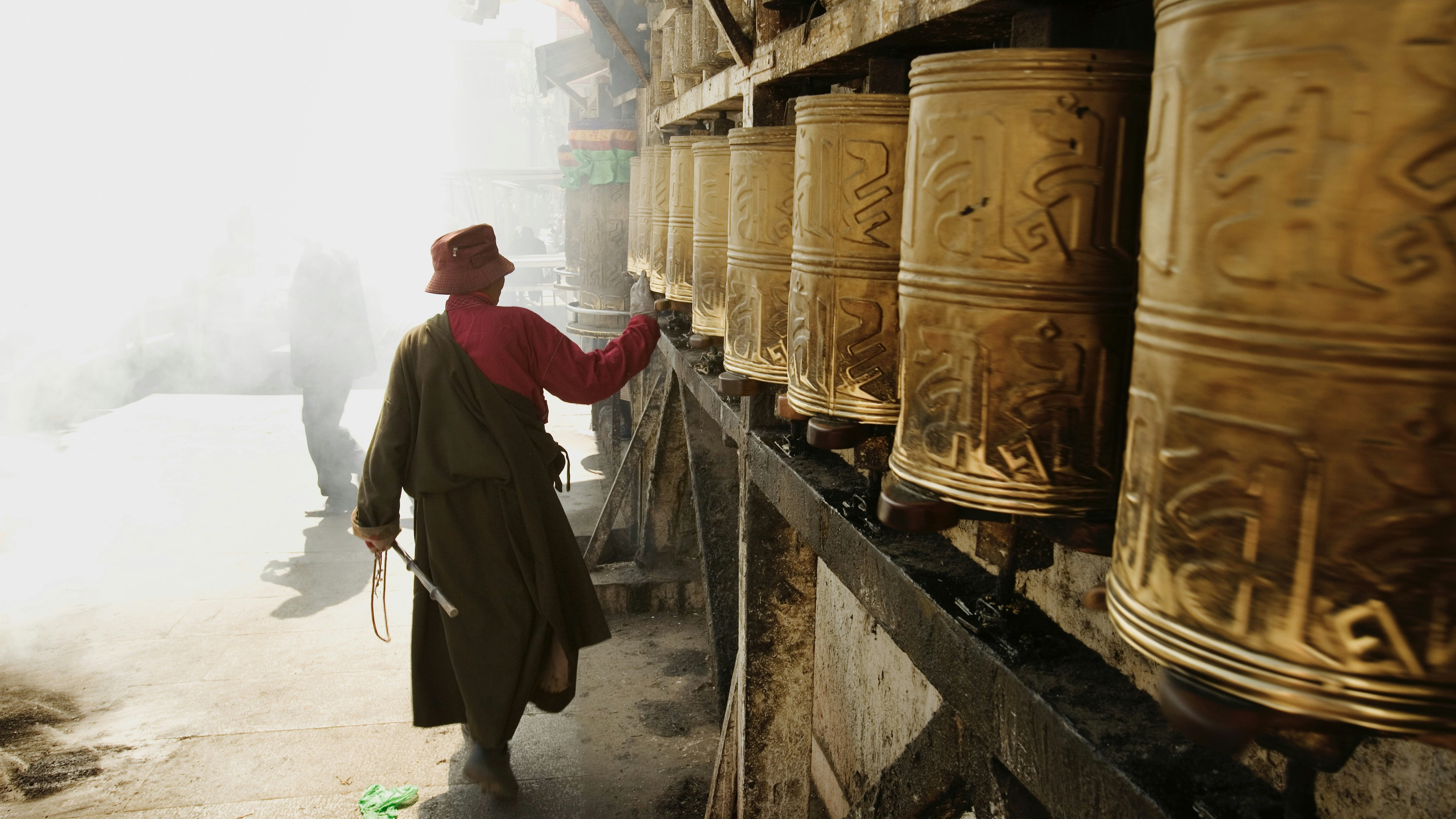
6. Walk Lhasa’s pilgrim circuits, Tibet
Distance: 8km (11 miles)
Mode of transport: On foot
Difficulty: Easy
Walking one of Lhasa’s pilgrim circuits is unlike anything you'll experience elsewhere. Most pilgrims ceaselessly twirl hand-sized personal prayer wheels; a few carry larger versions supported by a harness. Some even carry out full-body prostrations around the circuit, dressed in protective leather aprons and wearing wooden blocks on their hands. All walk in a single direction, toward an invisible common goal. It's a reminder of a greater, noble truth explored in Buddhism: life is suffering.
Inside the temples that line the circuit, the air is thick with the heady smells of yak butter and juniper, as devotees spoon fragrant herbs into incense burners or top up lamps from personal flasks of molten butter. Monks bless visitors with a splash of holy water or a tap from an ancient relic, as Tantric drumming booms from deep in the building like some primeval heartbeat. It's a scene that has scarcely changed in centuries, either in appearance or intensity of religious devotion. This is the spiritual heart of Tibet.

7. Trek the Headhunter’s Trail, Malaysian Borneo
Distance: 22.5km (14 miles)
Mode of transport: On foot, boat and bus
Difficulty: Moderate
On some journeys, you look at the scenery. On the Headhunter’s Trail in Borneo’s Gulung Mulu National Park, the scenery – or at least, those parts of the scenery with fur, feathers, scales and eyes – look at you, warily, as if you were a visitor from another world. Most travellers to this legendary reserve fly in and out, missing the best part of the experience: the understanding that being in nature is a soothing antidote to modern living.
On the old overland trail between the park headquarters and Limbang on the Brunei border, make your way through dense, dripping vegetation, half-deafened by the noises of the jungle. After long, draining days of hiking, meandering boat trips on jungle rivers and overnight stops in tribal longhouses, emerge with a newfound respect for the rainforest and the people and creatures who call it home.

8. Embark on a music pilgrimage through the USA’s South
Distance: 1308km (813 miles)
Mode of transport: Car
Difficulty: Easy
For anyone who loves music, the journey from Nashville to New Orleans might just be the most rewarding, exciting and spiritually enriching road trip imaginable: you get to experience music that changed the world in the very regions where it took shape. Nashville, Tennessee, nicknamed “Music City,” is both the epicenter of country music and the home of many other genres – indie and southern rock, rap, R&B, blues, electronic and jazz. It’s the perfect place to begin a journey through American music.
The I-40, known as the “Music Highway,” runs from Nashville to Memphis; as you drive it, signs announce the names of icons who settled or were raised in this fertile region: Tina Turner, Loretta Lynn, Johnny Cash and, of course, the King: Elvis Presley. This is a road trip through a musical wonderland, where museums, live venues and historic sites offer a joyful and insightful window into the South’s culture and history. It also offers travelers the chance to experience how music enhances our feelings as humans.

9. Reconnect with nature on the Galápagos Islands
Distance: 240km (149 miles)
Mode of transport: Boat/on foot
Difficulty: Moderate
Few places conjure as much awe as the Galápagos. The remote volcanic archipelago, called “Las Islas Encantadas” (the Enchanted Islands) by early explorers, captivated Charles Darwin, who spent five weeks here in 1835. The English naturalist marveled at the unusual plant and animal life he encountered – species that had developed in isolation from the continent, which often differed from island to island.
The experience sparked his imagination and featured prominently in his groundbreaking work On the Origin of Species, which forever changed our understanding of natural history. From giant-tortoise encounters to snorkeling with sea lions, seeing the fauna and flora of this equatorial archipelago will inspire wonder in our world and remind you that the laws of nature are immutable forces existing beyond human control - it's a liberating thought.
10. Hike through the heart of Sicily
Distance: 180 km (112 miles)
Mode of transport: On foot
Difficulty: Moderate to difficult
Stacked theatrically around the steep peaks of Sicily’s interior, Sutera is crowned by its “broken rock” – a craggy precipice that, according to legend, was split in two by lightning that struck at the moment of Christ’s death. Today, religion still shapes life in Sutera. Church bells bring people to worship several times daily; Semana Santa fills the streets with Easter processions that rival those in Spain for gilded, saint-worshiping splendor.
But few outside Sicily’s heartland know of this town – which, like many in Italy’s rural south, had seen its aging, fast-shrinking population so depleted that any new birth was greeted like the Second Coming. Experience the spirit of resilience and revival in Sicily’s sparsely populated interior, where restored pilgrim pathways such as the Magna Via Francigena (the road connecting Agrigento and Palermo) are bringing new life to remote communities. You'll learn a simple philosophical lesson too: change is inevitable. Sometimes you have to drop your guard to make the most of life. Living doesn't only mean survival.

11. Ride in the hoofprints of Kyrgyz nomads
Distance: 400km (249 miles)
Mode of transport: Horse
Difficulty: Tough
On a ride through Kyrgyzstan’s celestial Tiān Shān Mountains on a long-distance loop, you’ll take in gorges, forests and the lakeside summer paradise of Song-Köl. The history of the Kyrgyz highlands, and the stories of those who live here, would be incomplete without one central thread: the horse, a creature woven as tightly with the region’s past as the fabrics once transported here along the Silk Road.
Even today, riding is one of the more comfortable ways to get around mountainous Kyrgyzstan, where the often hazardous roads make for slow progress by car. It’s also the fastest route to immersion in the hospitable culture of nomadic Kyrgyz shepherds – a revelationary reminder of kinship between cultures and our similarities as humans, too – plus the not-so-hospitable weather of the capricious Tiān Shān Mountains.
You may choose to ride the whole 400km (249 mile) loop out of Rot-Front, or just a section of it, but whether for three days or 30, a horse-trekking journey through Kyrgyzstan is a ticket to follow in the footsteps – hoofprints – of old Silk Road traders while exploring a land where the steppe, mountains and sky meet.

12. Stargaze on the Cambrian Mountains Astro Trail, Wales
Distance: 80km (50 miles)
Mode of transport: Car/on foot
Difficulty: Easy
When night falls in the Cambrian Mountains, the darkness is total. Nicknamed the “Desert of Wales” for its vast expanses of nothingness (the name is certainly not due to its weather), this neck of the country is Wales at its wildest: rocky summits fall to wind-blasted, bracken-cloaked moors, river valleys and lichen-draped forests of oak and spruce where it’s quiet enough to hear your own heartbeat.
Drive the narrow lanes that whip through the drizzly heights to who-knows-where and the only traffic jam you’ll encounter is unruly sheep on the road. Find space, hope and fresh perspective by wishing on stars and spotting planets in this starkly beautiful region. When you gaze upon the galaxies above in Wales, you'll be humbled by the grandeur of the universe and reminded of your own, small part in it all.
13. Take a pilgrimage of faith through Europe
Total Distance: 1916km (1190 miles)
Mode of transport: Car
Difficulty: Easy
This contemplative journey takes in scenic and spiritual highs, from inspiring places of worship and the home of a historic Passion Play to a stretch of the Romantic Road.
Circling through Germany, Switzerland and Austria by road, this contemporary pilgrimage journeys through the secular and the spiritual, taking in city sights, verdant valleys and marvelous mountain views alongside inspiring places of worship and a village that’s been staging an Easter pageant for nearly 400 years.

14. Hike across Canada’s smallest province on the Island Walk
Distance: 700km (435 miles)
Transport: On foot or bicycle
Difficulty: Moderate
Not everyone who hikes or cycles the Island Walk considers their journey a pilgrimage. Some choose to take on sections of this 700km (435 mile) trail around Prince Edward Island (PEI) to enjoy the brisk ocean air, sandy beaches, forests and red-rock cliffs, or to stop for fresh seafood and leisurely chats.
Yet for others, circuiting Canada’s smallest province is a challenge, an adventure or a personal quest. This epic coastal route around PEI pairs leisurely glimpses of local culture with a multiday physical challenge. A slow, thoughtful reminder to being grateful for the small things.

15. Raft through the Grand Canyon along the Colorado River, USA
Distance: 446km (277 miles)
Mode of transport: Motorized pontoon raft
Difficulty: Tough
The Colorado River drops a welcome mat at Lees Ferry, where the crumbling red beauty of the Vermilion Cliffs provides a backdrop for the water. Crossing this mighty river was a challenge for Native Americans, explorers and pioneers, all stymied by the steep, soaring walls of the surrounding Colorado Plateau. But thanks to an upward flex in the ancient rock layers, which exposed more weatherable rocks, erosive forces have carved a wide valley at Lees Ferry, making it the best crossing point for hundreds of kilometers.
Wild rapids and ancient rocks are a given on a white water trip through the Grand Canyon; friendships born of adventure are a cherished surprise. Once you push off, it’s too late. Or maybe it’s just the beginning. Whichever it turns out to be, your reliance on one another will remind you of the key ingredients to good personal relationships: shared vulnerability, kindness and understanding.

16. Awaken your true feelings crossing the Ross Sea, Antarctica
Distance: Around 3700km (2300 miles)
Mode of transport: Ship
Difficulty: Easy to moderate
Antarctica is stunning. No place on Earth compares to this vast white wilderness of elemental forces: snow, ice, water and rock. As you journey through the storied but seldom-traveled vastness of the Ross Sea, experience Antarctica – and, indeed, yourself – to another degree. Here, the cold and wind are magnitudes greater. The tabular icebergs are more abundant. Wildlife scarcer.
Following in the footsteps of Antarctic explorers, marvel at dramatic snowbound landscapes and take in the awe-inspiring remnants of heroic expeditions, whilst using the seemingly endless openness as a way to sit with your feelings and name them: awe, impotent, overwhelmed, even boredom.
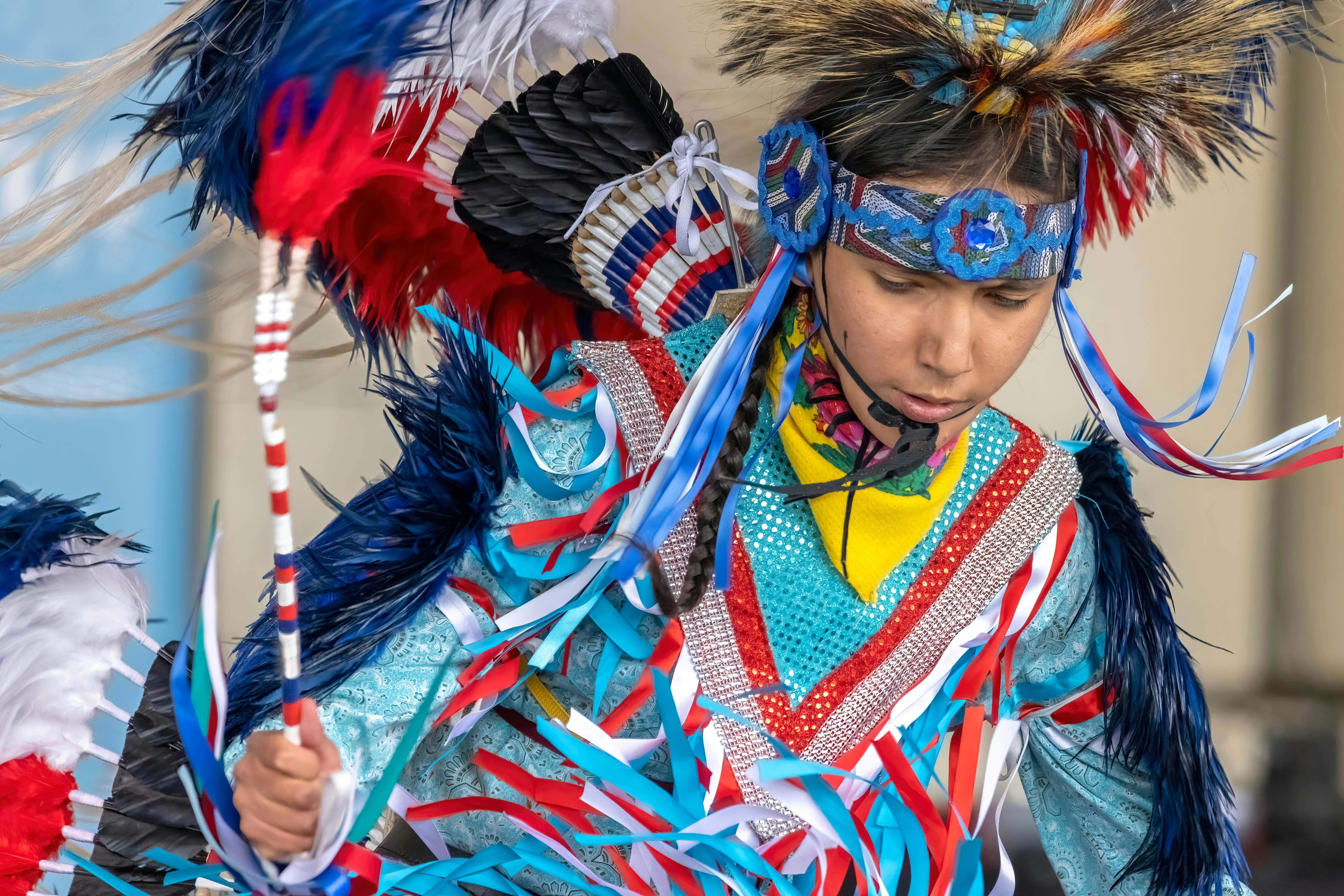
17. Trace the Indigenous roots of the Canadian Rockies
Distance: Around 1000km (621 miles)
Transport: Car or bus/shuttle
Difficulty: Easy
Many Indigenous cultures are passed from generation to generation through legends, myths and historical narratives. On a road trip through Alberta, in western Canada, learn about the traditional cultures of the Canadian Rockies and surrounding regions through a series of Indigenous-led experiences.
As you explore museum exhibits, join guides for forest walks or take a wildlife tour on the Prairies, stop and listen. These are stories that need to be told – and heard – they echo the past to instill empathy in us for the future. Pain heals, but scars always remain.
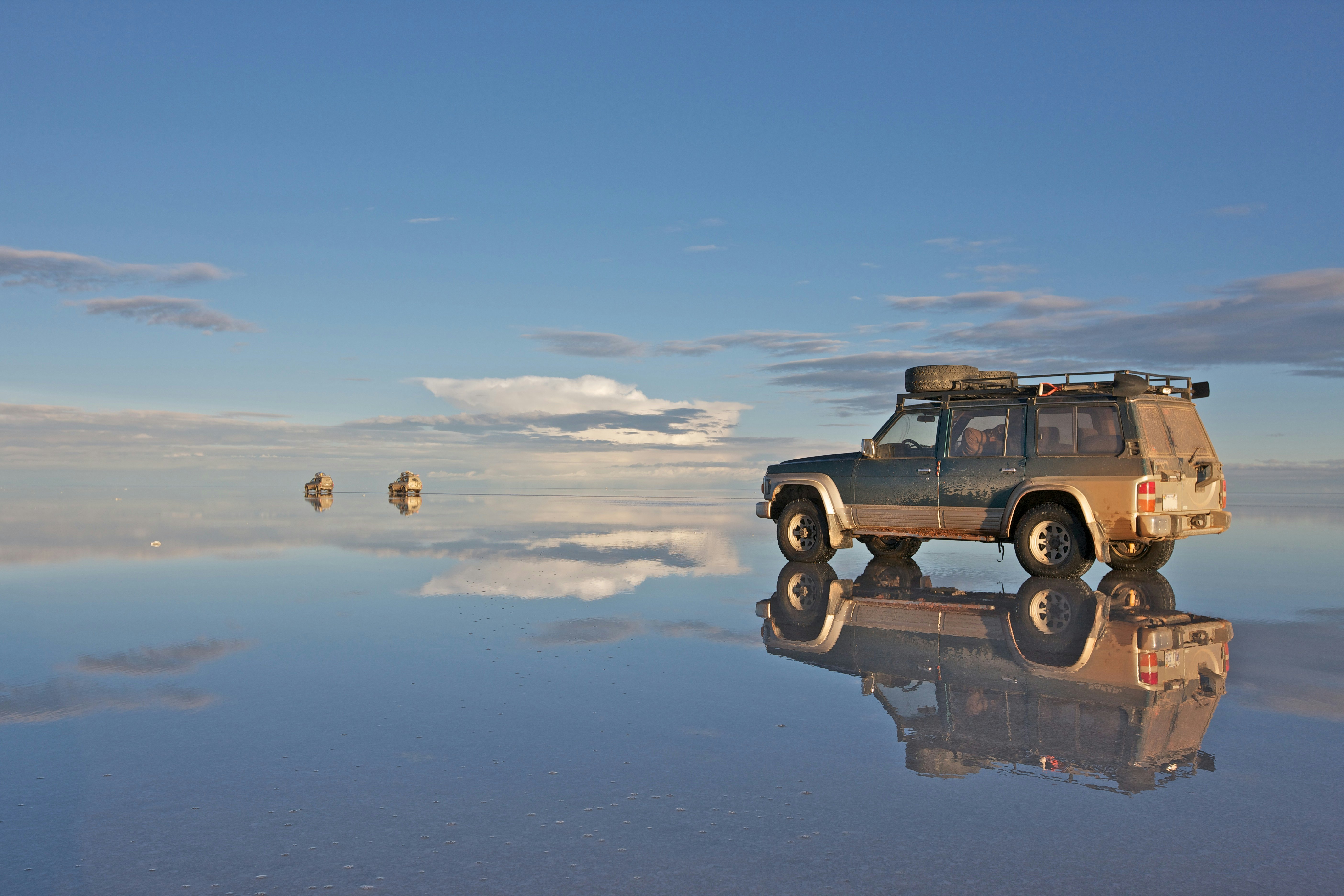
18. Step into the infinite in the Salar de Uyuni, Bolivia
Distance: Around 150km (93 miles)
Mode of transport: 4WD vehicle/on foot
Difficulty: Moderate to difficult
Bolivia’s blinding-white Salar de Uyuni salt flats express the endless – and exploring these vast plains begs introspection and the contemplation of infinity. This stark and surreal landscape covers some 12,100 sq km (4670 sq miles) and sits at an altitude of 3653m (11,984ft) above sea level.
From Uyuni, you’ll explore the flats on one of the 4WD tours that zip around the salar (salt flat), stopping off at lakes and highlight spots, and taking to the salty surface for exhilarating hikes across this chalkboard expanse. The salt flats are an outward and inward challenge, as the brisk night air will constantly remind you.

19. Marry the secular and the sacred tracing the Tóchar Phádraig pilgrimage, Ireland
Distance: 35km (22 miles)
Mode of transport: On foot
Difficulty: Moderate
Medieval monks were not averse to a little cultural appropriation: taking pagan rituals and celebrations and repackaging them as Christian feast days; embellishing local lore into tales of miraculous endeavors; and peddling legends to encourage more pilgrims. Ireland’s most famous myth tells of St Patrick casting out the island’s snakes from the summit of Cruachán Aigle, a conical peak on the west coast, sometime in the 5th century.
Cruachán Aigle became Croagh Patrick – and the pilgrims followed. Sacred in pagan times, the mountain was also linked to Cruachan Aí – the seat of the high kings of Connaught – by a chariot trail now known as Tóchar Phádraig (St Patrick’s Causeway). Walking this pagan-cum-pilgrim trail offers a glimpse into Ireland’s complex history, but it is walking with intent – a key part of any pilgrimage – that elevates this route from the scenic to the profound, especially if it's wet, muddy, and slow-going. Under these conditions, we afford ourselves the space to be honest about our feelings.

20. Shatter the idea of the individual self by piloting a canoe down the Zambezi River, Zambia and Zimbabwe
Distance: 70km (43 miles)
Mode of transport: Canoe
Difficulty: Difficult
A canoe safari is visceral and intimate – sometimes more hair-raising than being in a car, but more rewarding, too. Paddle through some of Africa’s wildest territory on a Zambezi canoe safari, steering among hippos by day and camping on remote river islands by night.
You function as the driver (and the engine) of your vehicle – the hushed voice of a guide is your prompt to paddle faster or jam an oar in the current and make a retreat. It's a gentle reminder that the individual self is an illusion. You and your surroundings are one. For canoeists, the best stretch is near the midway point, west of Lake Kariba on the Zimbabwe–Zambia border, where the river braids among myriad islands.

21. Walk the Lurujarri Dreaming Trail with the Goolarabooloo, Australia
Distance: 82km (51 miles)
Mode of transport: On foot
Difficulty: Moderate
Indigenous culture runs deep across the vast Kimberley region of northwestern Australia. When a Nyikina man, Paddy Roe, came to the Dampier Peninsula in the 1930s, the fading Jabirr Jabirr elders, bereft of suitable descendants, passed on custodianship of their Country (the Lore: songs, stories, customs and responsibilities, inherited from the earlier Ngumbarl and Djugun people), to the young Roe.
Having founded his Goolarabooloo Community at Millibinyari on Ngunungurrukun, Roe instigated the Lurujarri Heritage Trail in 1987 as a means for his people to reconnect with Country and their traditional heritage, and as a way of cultivating respect for Country among non-Indigenous people.
Surrender to the rhythm of an ancient songline along the trail, a nine-day cultural immersion into this wild and wonderful corner of Western Australia and you'll realize that we're all interconnected: the past, present, and future all coexist.
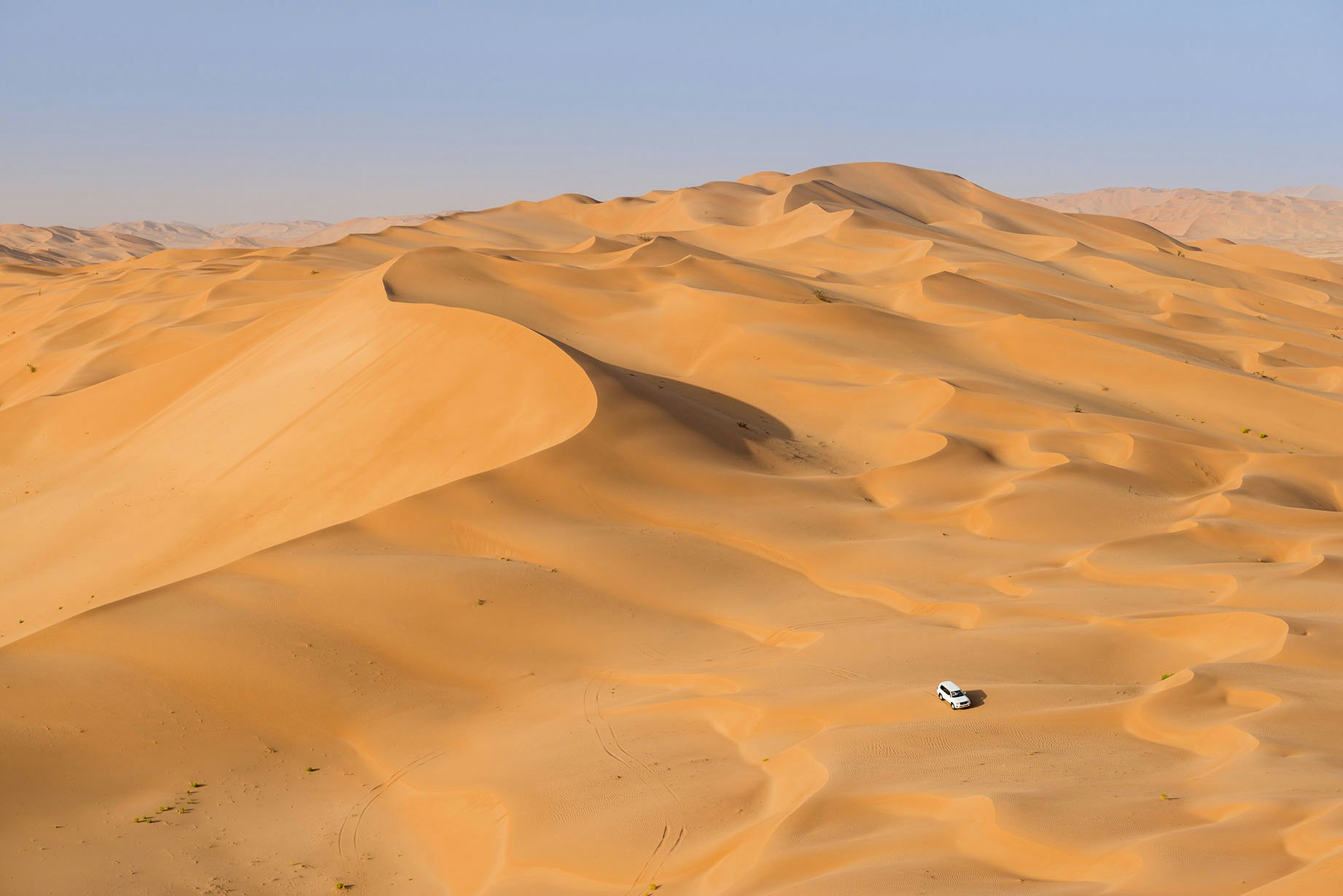
22. Adventure through the endless dunes of the Empty Quarter, Oman
Distance: Around 300km (190 miles) one-way
Mode of transport: 4WD vehicle
Difficulty: Easy
Oman’s Empty Quarter counts among the biggest blank spaces anywhere on Earth – making a journey into this sea of sand a surprising and sublime experience. It’s a world of windblown sand and rolling dunes, gilded dawns and bloody sunsets, loping camels and lonely wanderers.
Its featurelessness puts a heroic focus on all those who come here: anyone who marks its pristine dunes with their footprints or casts a rare shadow over its shadeless tracts. Known as a place of enchantment, it is also a deadly serious place to explore. Today, few tourists set out on tours to nibble at the edges of the Empty Quarter, but even on a short trip, you can return with a sense of its oceanic vastness. It helps to deflate the ego and diminish a sense of self-importance.
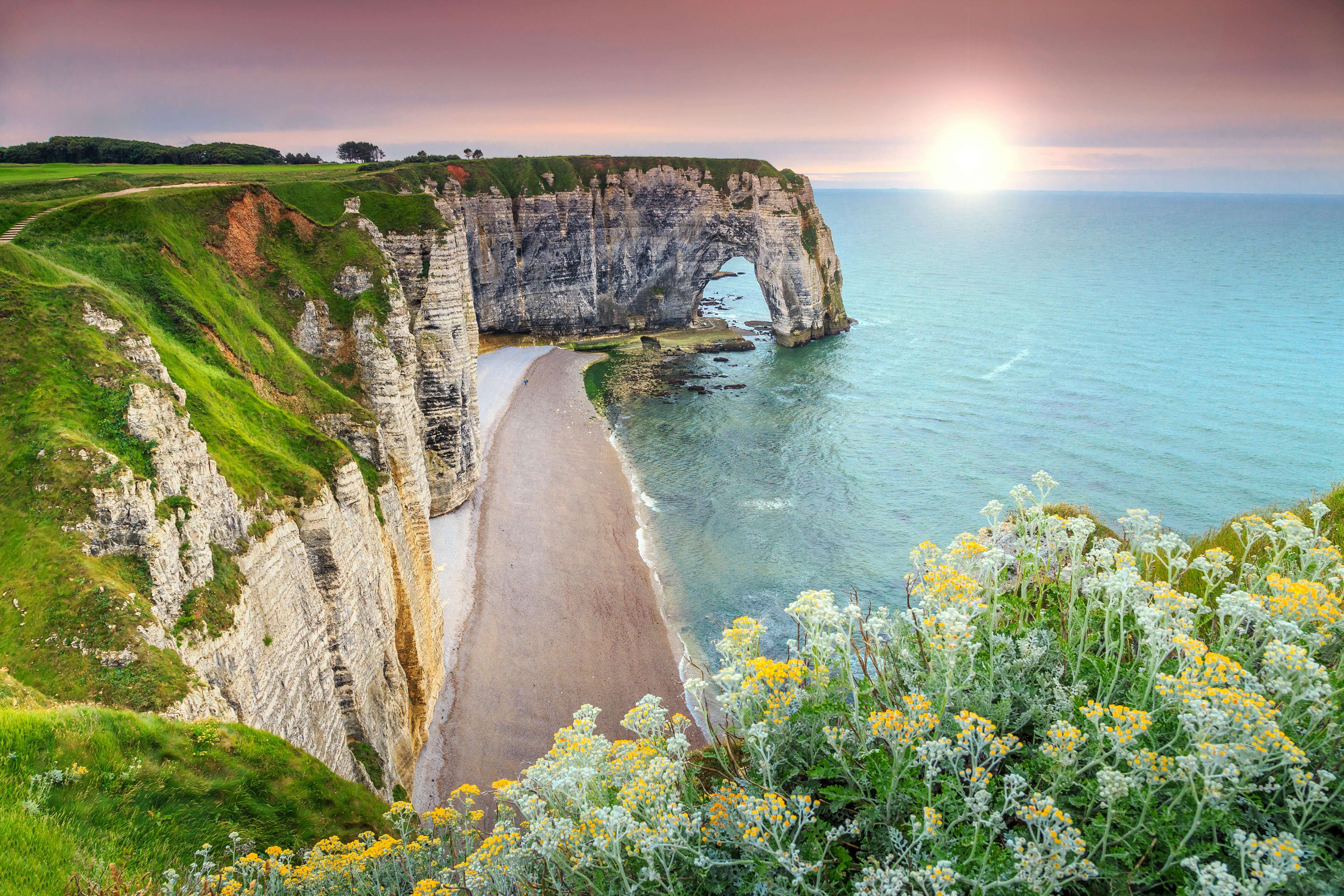
23. Pay respect to lost lives on the Normandy coast, France
Distance: 140km (87 miles)
Mode of transport: Car, e-bike
Difficulty: Easy
Out of season, Normandy offers enough quiet to end the preoccupations and worries that keep us from our true selves. Motor along France’s most emotive coastline, where peaceful swathes of sand and moving memorials provide a living lesson in WWII history.
The powder-soft beaches and breeze-swept buffs of Normandy’s northern coast are quiet outside of summer; bar the odd wading bird and plump harbor seal, they are deathly quiet.

24. Tread with meaning on an American Civil Rights journey from Memphis to Montgomery
Distance: 966km (600 miles)
Mode of transport: Car
Difficulty: Easy
A white wreath on the second floor of the Lorraine Motel in downtown Memphis draws the eye toward Room 306, marking the spot where Dr Martin Luther King, Jr was assassinated on April 4, 1968. Dr King was one of many Black Americans who challenged segregationist Jim Crow laws in the 1950s and ’60s – and their activism transformed the American South.
A journey between key Civil Rights sites, from Memphis to Selma, drops you into this compelling history – and the ongoing story. Visionary leaders and nonviolent activism powered the fight for racial equality centered in the Deep South. Tracing the history of where it happened allows us to remember that fears are not facts and it's only when we acknowledge the true cause of our past traumas that can we stop repeating them in the future.
25. Temple to temple on Japan's Shikoku Pilgrimage
Distance: 1400km (870 miles)
Mode of transport: On foot or by bike, car or bus
Difficulty: Difficult on foot, moderate by bike, easy by car/bus
Until about 100 years ago, all Shikoku pilgrims walked the full extent of this route connecting the island's 88 sacred temples. They were following the route of the great saint Kōbō Daishi in a search for enlightenment. For 1200 years overcoming the physical hardships of the journey was a form of ascetic practice as pilgrims strove to attain enlightenment. With no maps or guidebooks, they set out with only a vague idea of where they were going.
While the advent of buses, bicycles and the Internet lessens the hardships, there is a resurgence of walkers searching for meaning and self-realization. Henro (pilgrims) come to Shikoku with varying religious beliefs; many with none. All are welcome. In the words of Kōbō Daishi, "Do not just walk in the footsteps of the men of old, seek what they sought."













